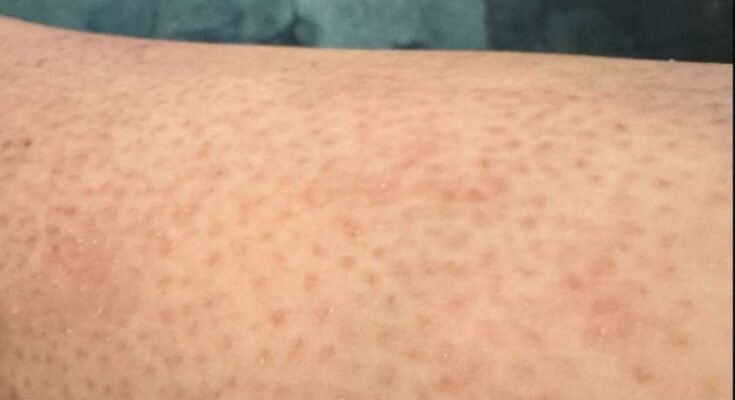Understanding Strawberry Skin: Causes and Characteristics
Strawberry skin, also known as keratosis pilaris, is a common condition characterized by small dark spots on the skin, resembling the seeds on a strawberry. These spots are often the result of clogged pores or hair follicles filled with oil, bacteria, and dead skin cells. It can also be caused by shaving, which can lead to irritation and inflammation. The condition is more prevalent in people with dry skin and can be exacerbated by factors such as genetics, hormonal changes, and certain skin types.
Common Misconceptions About Strawberry Skin
One common misconception is that strawberry skin is a result of poor hygiene. In reality, it is often due to genetic factors and skin type rather than cleanliness. Another misconception is that it can be cured overnight; however, it typically requires consistent care and management. Some people also mistakenly believe that aggressive scrubbing will eliminate the condition, but this can actually worsen the irritation and inflammation.
Effective Skincare Routine for Smooth Legs
To achieve smooth legs, it is essential to establish a consistent skincare routine. Start by using a gentle cleanser to wash your legs daily, followed by exfoliation to remove dead skin cells. Apply a hydrating moisturizer to keep the skin soft and supple. Incorporate products containing salicylic acid or glycolic acid, which help to unclog pores and reduce the appearance of strawberry skin. Consistency is key, so make sure to follow this routine regularly.
Exfoliation Techniques to Reduce Strawberry Skin
Exfoliation is crucial in managing strawberry skin. Use a gentle exfoliating scrub or a chemical exfoliant with alpha or beta hydroxy acids to remove dead skin cells and unclog pores. Exfoliate 2-3 times a week, but avoid over-exfoliating as it can irritate the skin. Consider using a dry brush before showering to stimulate circulation and improve skin texture. Always follow up with a moisturizer to prevent dryness.
Moisturizing Strategies for Healthier Skin
Moisturizing is vital for maintaining healthy skin and reducing the appearance of strawberry skin. Choose a moisturizer that contains ingredients like urea, lactic acid, or ceramides, which help to retain moisture and improve skin barrier function. Apply the moisturizer immediately after showering to lock in hydration. For extra nourishment, consider using body oils or lotions with natural ingredients like shea butter or coconut oil.
Diet and Lifestyle Changes to Improve Skin Texture
A healthy diet and lifestyle can significantly impact skin texture. Ensure you are consuming a balanced diet rich in vitamins and antioxidants, such as fruits, vegetables, and omega-3 fatty acids. Stay hydrated by drinking plenty of water throughout the day. Regular exercise can improve circulation and promote healthy skin. Avoid smoking and excessive alcohol consumption, as they can contribute to skin dryness and irritation.
Over-the-Counter Treatments and Remedies
There are several over-the-counter treatments available for managing strawberry skin. Look for products containing salicylic acid, glycolic acid, or lactic acid, which help to exfoliate and unclog pores. Retinoid creams can also be effective in promoting cell turnover and reducing the appearance of strawberry skin. Be patient, as these treatments may take several weeks to show noticeable results.
Professional Treatments for Persistent Cases
If over-the-counter treatments are not effective, consider seeking professional treatments. Dermatologists may recommend chemical peels, microdermabrasion, or laser therapy to improve skin texture and reduce the appearance of strawberry skin. These treatments are more intensive and can provide faster results, but they should be performed by a qualified professional to ensure safety and effectiveness.
Preventive Measures to Avoid Recurrence
To prevent the recurrence of strawberry skin, maintain a consistent skincare routine and avoid known triggers. Use a sharp razor and shaving cream to minimize irritation when shaving. Wear loose-fitting clothing to reduce friction on the skin. Protect your skin from excessive sun exposure by using sunscreen. Regularly moisturize and exfoliate to keep your skin healthy and smooth.
When to Consult a Dermatologist
If you have tried various home remedies and over-the-counter treatments without success, or if your strawberry skin is causing significant discomfort or self-consciousness, it may be time to consult a dermatologist. A dermatologist can provide a proper diagnosis and recommend personalized treatment options. They can also rule out other skin conditions that may resemble strawberry skin.



